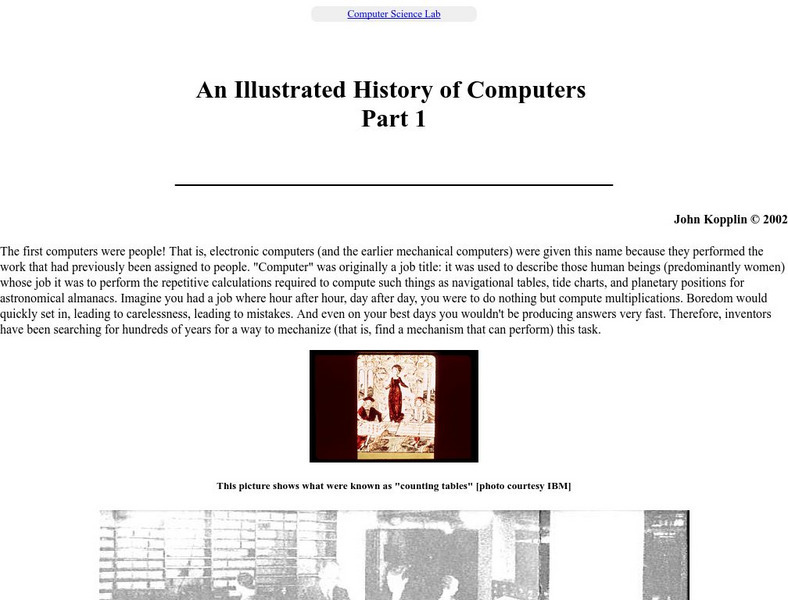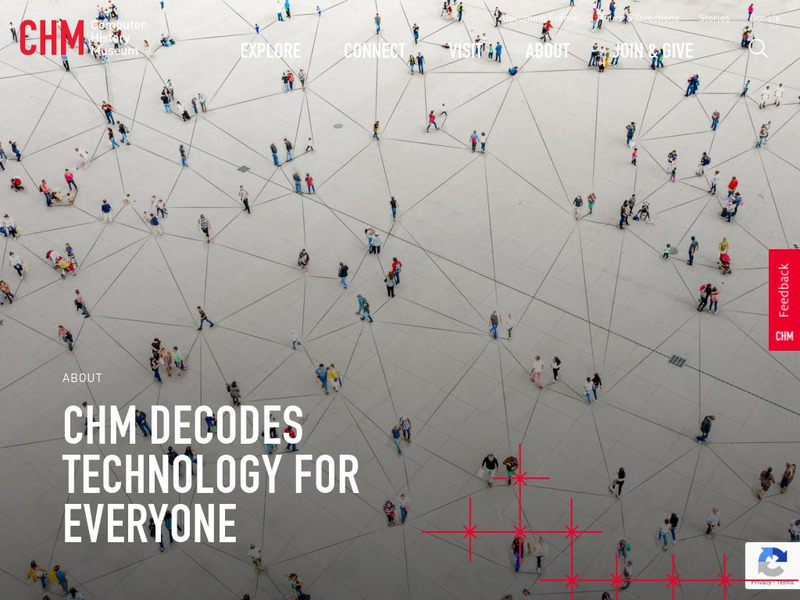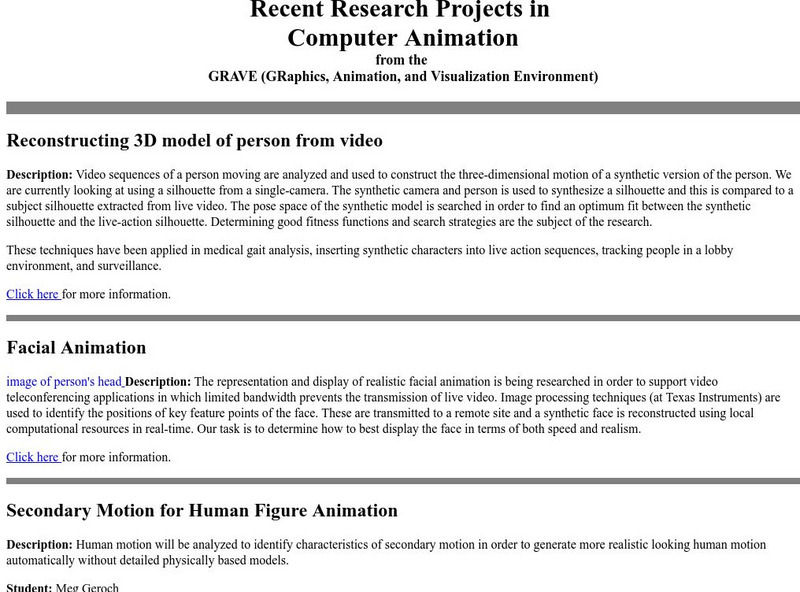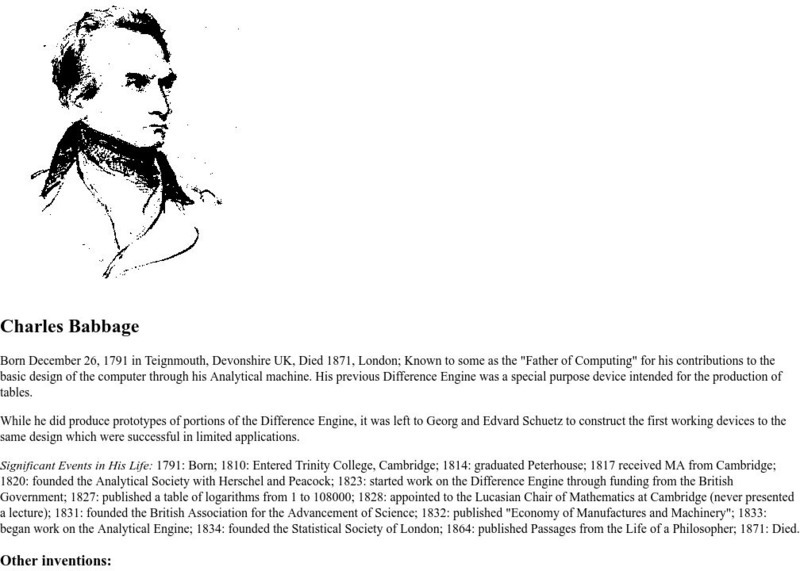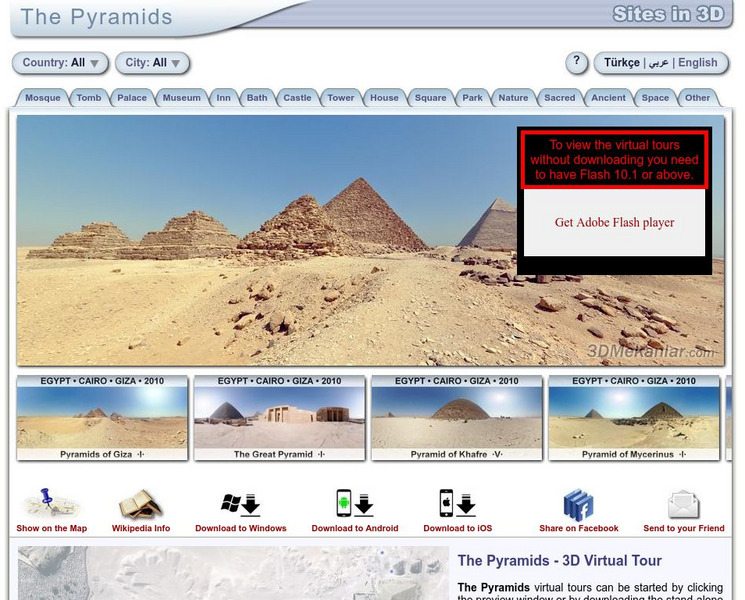Hi, what do you want to do?
Other
An Illustrated History of Computers Part 1
This site describes the history of computer innovations beginning with early mechanical devices to the electronic devices of the 20th century.
Computer History Museum
Computer History Museum: The Babbage Engine
Charles Babbage (1791-1871) was a computer pioneer who designed the first automatic computing engine. Trace the history of the many computers he designed and how they worked. View a video [1:39] of Difference Engine No.2, in operation.
Other
London Grid for Learning: History of Computing: A Brave New World
This resource aims to teach the history of computing and the effect of landmark moments in computing history on today's world. Crosses different curriculum areas. Explanations of many of the world's significant computers were provided by...
Computer History Museum
Computer History Museum
This site includes a variety of exhibits, an artifact repository, special events and publications.
National Academy of Engineering
Greatest Achievements: Computers
Computers are one of the top 20 engineering innovations of the 20th century. Read the history behind this great invention.
Ohio State University
Osu: Introduction to Computer Animation
An introduction to computer animation, written at an advanced level. Includes an overview of computer animation and discusses its heritage, history, software tools, and more. Lots of embedded links to information on related topics.
Computer Hope
Computer Hope: Information About Computer Floppy Drives
Informative site detailing the use of computer floppy dirves. Content includes a focus on floppy drive ABCs, floppy history, floppy cable, creating a floppy boot disk, floppy disk definitions, and coverage of 3.5 and 5 1/4 floppy diskettes.
National High Magnetic Field Laboratory
Magnet Academy: Timeline of Electricity and Magnetism: 1960 1979
Computers evolve into PCs, researchers discover one new subatomic particle after another and the space age gives our psyches and science a new context.
Virginia Tech
Virginia Tech: Charles Babbage
Learn about Charles Babbage; computer pioneer, philosopher, politician, newtonian, industrialist who lived from 1791 to 1871.
Computer History Museum
Computer History Museum: Restoring the Dec Pdp 1 Computer Exhibit
Digital Equipment Corporation (DEC) introduced the PDP-1 in 1959. It represented a radical shift in the philosophy of computer design. This site presents the history of the PDP-1, the people that worked on the PDP-1 project, how the...
Other
Sdsc: Ada Byron, Countess of Lovelace
Ada Byron, Lady Lovelace (1815-1852), was one of the most picturesque characters in computer history. The daughter of the poet Lord Byron, she was raised to be a mathematician and scientist and contributed to the work of Charles Babbage.
History of Computing Science
History of Computing Science: Edvac
EDVAC (Electronic Discrete Variable Automatic Computer) was an early computer that was one of the first to use the binary number system to represent information. This lecture is a brief presentation of the EDVAC.
Project Gutenberg
Project Gutenberg: Audio Books
A special subcollection of Project Gutenberg's online book catalog: audio books, recorded by real people (there is also a computer-generated audio books collection). Currently includes 35 or so selections ranging from fairy tales,...
Other
3 D Mekanlar: Sites in 3 D: The Pyramids
Take a virtual tour of the Egyptian pyramids. There are thirty-one tours in all. Instructions on how to navigate through the tours are given below, and the set can also be downloaded to your computer for easier viewing.
John F. Kennedy Center
The Kennedy Center: John F. Kennedy Center for the Performing Arts
One of the finest sites of its kind on the Internet, ArtsEdge is dedicated to supporting arts education through such initiatives as curriculum development, cross-curricular teaching, and technology integration. Find arts-related...
TESL Journal
Activities for Esl Students: Verb Form Quiz About Vancouver
Sixty-one questions to test your knowledge of verb usage. You choose the correct answer and if you're correct, the next question is displayed. If you're wrong, the computer lets you know immediately by offering correct answering without...
PBS
Pbs: Who Made America?: Innovators: Gary Kildall
One-page profile of influential innovator, Gary Kildall, a pioneer in the computer age whose vision and ideas created the first disc operating system for a microcomputer.
Agnes Scott College
Agnes Scott College: Ada Byron, Lady Lovelace
Ada Byron, Lady Lovelace (1815-1852), was one of the most picturesque characters in computer history. The daughter of the poet Lord Byron, she was raised to be a mathematician and scientist and contributed to the work of Charles Babbage.





